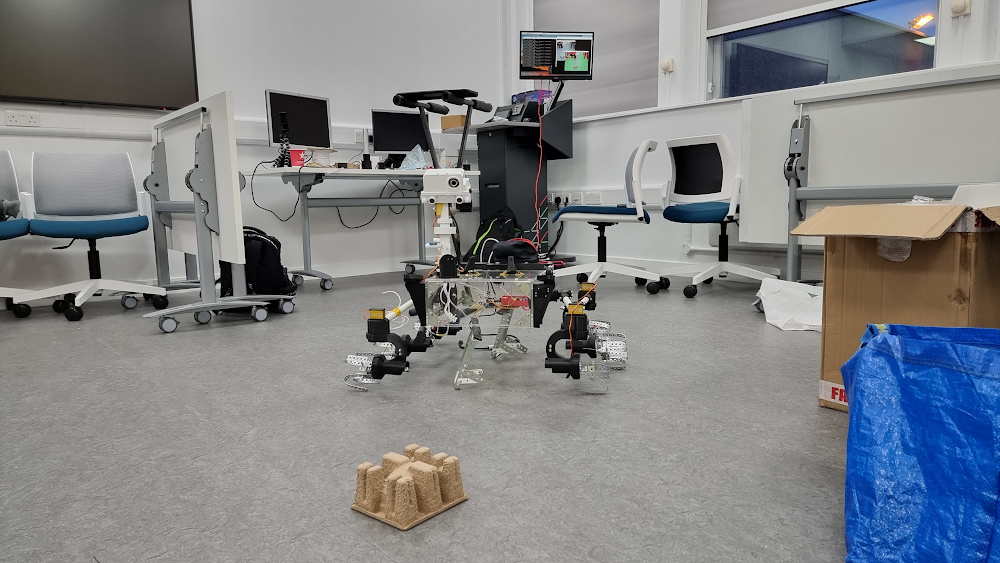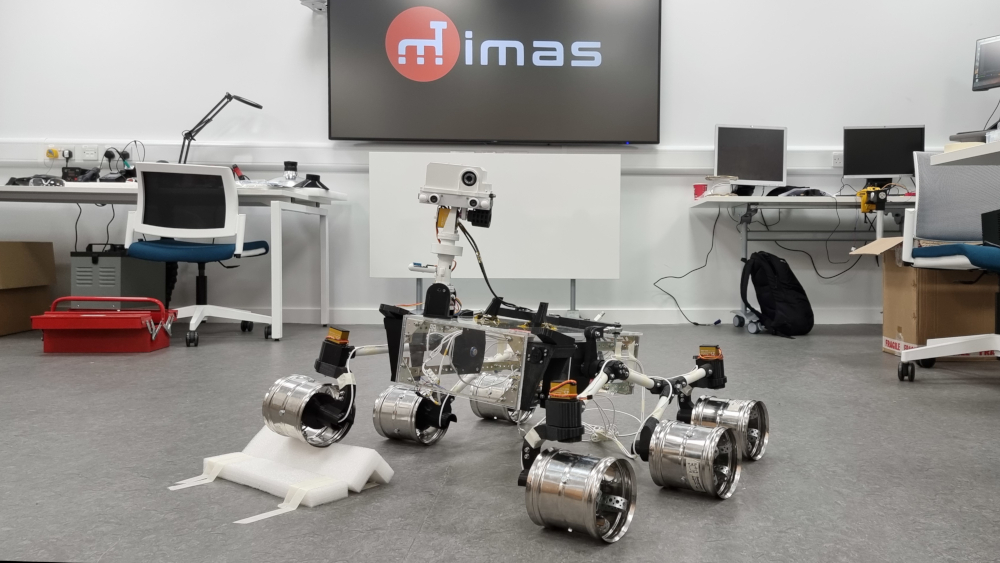As the weight of the rover increases, the metal "U"-shaped brackets that act as an in-wheel suspension system started deforming. In the picture shown below (where the contrast has been reduce for a better understanding), on the left-hand, the rover side is tremendously leaned on the wheel and the reached angle increases stress on the 3D-printed plastic (red line). On the right-hand side of the image, however, the rover weight is more evenly distributed on the wheel (green line), resulting in an almost horizontal inclination angle if compared to the terrain (blue lines). This is achieved by doubling the "U"-shaped brackets inside the wheel. The principle of suspension embedded inside the wheel remained the same, but the maximum possible load per single wheel is significantly increased.
- [Hours of work: 8]
- [People involved: Giorgio]



